- Brian
- September 21, 2023
- 3:17 am

Harper Ross
Answered on 3:17 am
APC and PC/UPC are two types of polish styles for the ferrules inside the optical connectors. The ferrule is the housing for the exposed end of a fiber, designed to be connected to another fiber, or into a transmitter or receiver. The polish style affects the quality of the signal transmission and the return loss of the connector.
APC stands for Angled Physical Contact. It means that the ferrule endface is polished at an 8° angle, which causes the reflected light to reflect at an angle into the cladding instead of straight back toward the source. This reduces the return loss and improves the performance of the connector. APC connectors are usually green in color.
PC stands for Physical Contact. It means that the ferrule endface is polished with no angle but with a slight curvature for better core alignment. UPC stands for Ultra Physical Contact. It is an improvement of the PC polish with a finer surface finish and a lower return loss. PC and UPC connectors are usually blue in color.
Different applications may require different polish styles depending on the sensitivity to return loss and the wavelength range of the signal. Generally, APC connectors are preferred for single-mode fibers, especially for higher wavelengths (above 1500 nm) and longer distances. PC and UPC connectors are more common for multimode fibers and shorter distances.
Some examples of optical connectors that use APC polish are LC/APC, SC/APC, FC/APC, E2000/APC, etc. Some examples of optical connectors that use PC or UPC polish are LC/PC, SC/PC, FC/PC, ST/PC, MTRJ/PC, etc.
People Also Ask
AMD: Pioneering the Future of AI Liquid Cooling Markets
In the rapidly evolving landscape of AI infrastructure, AMD is emerging as a game-changer, particularly in liquid cooling technologies. As data centers push the boundaries of performance and efficiency, AMD’s latest advancements are setting new benchmarks. FiberMall, a specialist provider of optical-communication products and solutions, is committed to delivering cost-effective
The Evolution of Optical Modules: Powering the Future of Data Centers and Beyond
In an era dominated by artificial intelligence (AI), cloud computing, and big data, the demand for high-performance data transmission has never been greater. Data centers, the beating hearts of this digital revolution, are tasked with processing and moving massive volumes of data at unprecedented speeds. At the core of this
How is the Thermal Structure of OSFP Optical Modules Designed?
The power consumption of ultra-high-speed optical modules with 400G OSFP and higher rates has significantly increased, making thermal management a critical challenge. For OSFP package type optical modules, the protocol explicitly specifies the impedance range of the heat sink fins. Specifically, when the cooling gas wind pressure does not exceed
AI Compute Clusters: Powering the Future
In recent years, the global rise of artificial intelligence (AI) has captured widespread attention across society. A common point of discussion surrounding AI is the concept of compute clusters—one of the three foundational pillars of AI, alongside algorithms and data. These compute clusters serve as the primary source of computational
Data Center Switches: Current Landscape and Future Trends
As artificial intelligence (AI) drives exponential growth in data volumes and model complexity, distributed computing leverages interconnected nodes to accelerate training processes. Data center switches play a pivotal role in ensuring timely message delivery across nodes, particularly in large-scale data centers where tail latency is critical for handling competitive workloads.
Comprehensive Guide to 100G BIDI QSFP28 Simplex LC SMF Transceivers
The demand for high-speed, cost-effective, and fiber-efficient optical transceivers has surged with the growth of data centers, telecommunications, and 5G networks. The 100G BIDI QSFP28 (Bidirectional Quad Small Form-Factor Pluggable 28) transceiver is a standout solution, enabling 100 Gigabit Ethernet (100GbE) over a single-mode fiber (SMF) with a simplex LC
Related Articles

800G SR8 and 400G SR4 Optical Transceiver Modules Compatibility and Interconnection Test Report
Version Change Log Writer V0 Sample Test Cassie Test Purpose Test Objects:800G OSFP SR8/400G OSFP SR4/400G Q112 SR4. By conducting corresponding tests, the test parameters meet the relevant industry standards, and the test modules can be normally used for Nvidia (Mellanox) MQM9790 switch, Nvidia (Mellanox) ConnectX-7 network card and Nvidia (Mellanox) BlueField-3, laying a foundation for
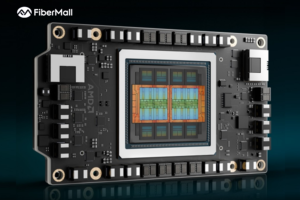
AMD: Pioneering the Future of AI Liquid Cooling Markets
In the rapidly evolving landscape of AI infrastructure, AMD is emerging as a game-changer, particularly in liquid cooling technologies. As data centers push the boundaries of performance and efficiency, AMD’s latest advancements are setting new benchmarks. FiberMall, a specialist provider of optical-communication products and solutions, is committed to delivering cost-effective
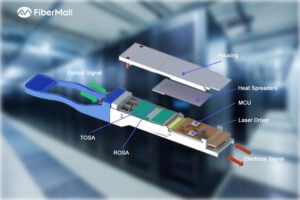
The Evolution of Optical Modules: Powering the Future of Data Centers and Beyond
In an era dominated by artificial intelligence (AI), cloud computing, and big data, the demand for high-performance data transmission has never been greater. Data centers, the beating hearts of this digital revolution, are tasked with processing and moving massive volumes of data at unprecedented speeds. At the core of this
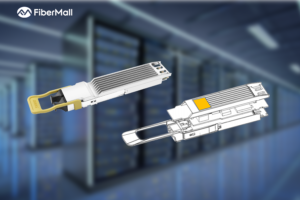
How is the Thermal Structure of OSFP Optical Modules Designed?
The power consumption of ultra-high-speed optical modules with 400G OSFP and higher rates has significantly increased, making thermal management a critical challenge. For OSFP package type optical modules, the protocol explicitly specifies the impedance range of the heat sink fins. Specifically, when the cooling gas wind pressure does not exceed
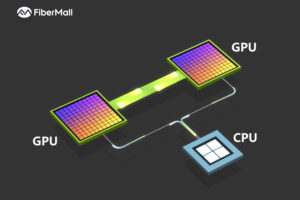
AI Compute Clusters: Powering the Future
In recent years, the global rise of artificial intelligence (AI) has captured widespread attention across society. A common point of discussion surrounding AI is the concept of compute clusters—one of the three foundational pillars of AI, alongside algorithms and data. These compute clusters serve as the primary source of computational
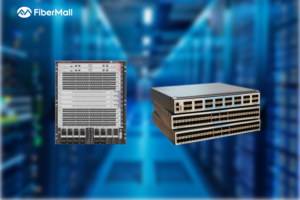
Data Center Switches: Current Landscape and Future Trends
As artificial intelligence (AI) drives exponential growth in data volumes and model complexity, distributed computing leverages interconnected nodes to accelerate training processes. Data center switches play a pivotal role in ensuring timely message delivery across nodes, particularly in large-scale data centers where tail latency is critical for handling competitive workloads.
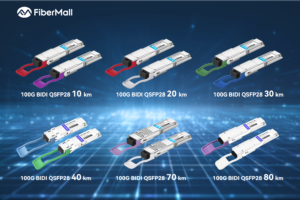
Comprehensive Guide to 100G BIDI QSFP28 Simplex LC SMF Transceivers
The demand for high-speed, cost-effective, and fiber-efficient optical transceivers has surged with the growth of data centers, telecommunications, and 5G networks. The 100G BIDI QSFP28 (Bidirectional Quad Small Form-Factor Pluggable 28) transceiver is a standout solution, enabling 100 Gigabit Ethernet (100GbE) over a single-mode fiber (SMF) with a simplex LC
Related posts:
- Is the CX7 NDR 200 QSFP112 Compatible with HDR/EDR Cables?
- Is UFM as Functional as Managed Switch and Unmanaged Switch?
- What FEC is Required When the 400G-BIDI is Configured for Each of the Three Operating Modes?
- What Type of Optical Connectors do the 400G-FR4/LR4, 400G-DR4/XDR4/PLR4, 400G-BIDI (400G SRBD), 400G-SR8 and 400G-2FR4 Transceivers Use?
